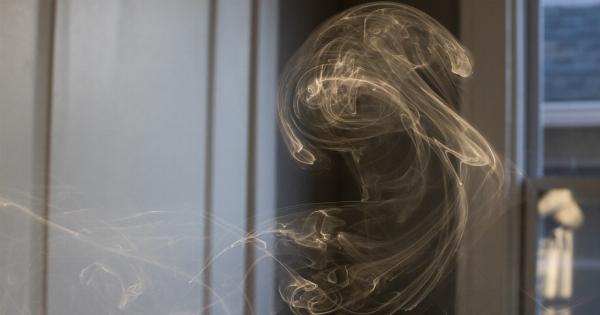If you are a pet owner and a smoker, it is important to recognize the dangers that secondhand smoke can pose to your furry friends.
While you might be aware of the harmful effects of smoking on your own health, it is equally crucial to understand how the smoke-filled environment affects your beloved companion animals. Secondhand smoke is harmful not only to humans but to pets as well, increasing their risk of developing various health conditions.
In this article, we will delve deeper into the potential dangers of secondhand smoke on pets and explore ways to protect them from this hazardous combination.
Understanding Secondhand Smoke
Secondhand smoke refers to the smoke that is exhaled by smokers as well as the smoke that is emitted from burning cigarettes, cigars, or pipes. This smoke is a toxic mix of chemicals and can cause numerous health problems in humans.
However, the effects of secondhand smoke on pets are often overlooked or underestimated.
The Dangers of Secondhand Smoke for Pets
Pets, just like humans, inhale the air in their surroundings, and if that air is contaminated with secondhand smoke, it can have severe consequences for their health. Here are some of the dangers associated with pets being exposed to secondhand smoke:.
1. Respiratory Issues
Pets that are regularly exposed to secondhand smoke are at an increased risk of developing various respiratory problems. Cats, in particular, are highly susceptible to smoke-related issues due to their grooming habits.
They tend to lick their fur, which leads to them ingesting the toxic chemicals present in smoke. This can result in a range of respiratory conditions, including asthma, bronchitis, and even lung cancer.
2. Allergies and Skin Irritations
Secondhand smoke can also trigger allergies and skin irritations in pets. Dogs, for instance, may experience itchy and inflamed skin, rashes, and other allergic reactions.
These symptoms can make them uncomfortable and create a poor quality of life for your furry friend.
3. Increased Cancer Risk
The carcinogenic substances present in secondhand smoke can significantly increase the risk of developing cancers in pets.
Dogs exposed to smoke are at a higher risk of developing lung cancer, while cats are prone to developing lymphoma, a type of cancer that affects the lymph nodes. Furthermore, birds, small mammals, and reptiles are also susceptible to cancer and other health problems due to exposure to smoke-filled environments.
4. Eye and Nose Irritation
Pets exposed to secondhand smoke may experience eye and nose irritations. This can manifest as red, watery eyes, nasal discharge, sneezing, and even nasal bleeding.
These symptoms indicate that their respiratory system is being adversely affected by the toxic smoke.
5. Aggravation of Existing Conditions
If your pet already suffers from any pre-existing respiratory conditions such as asthma or chronic bronchitis, exposure to secondhand smoke can worsen their symptoms.
It can lead to increased coughing, wheezing, and shortness of breath, making their existing health condition much more challenging to manage.
Protecting Your Pets from Secondhand Smoke
As a responsible pet owner, it is your duty to create a safe and healthy environment for your furry friends. Here are some steps you can take to protect your pets from the dangers of secondhand smoke:.
1. Smoke Outdoors
If you are a smoker, make it a strict rule to smoke only outdoors. This will prevent the smoke from lingering indoors and reduce your pet’s exposure to secondhand smoke.
Ensure that you are standing away from entrances or open windows to prevent smoke from entering your home.
2. Designate Smoke-Free Zones
Designate certain areas of your home as smoke-free zones. This can include rooms where your pets spend the most time, such as living rooms or bedrooms.
By keeping these areas free from smoke, you provide your pets with a safe space where they can retreat without exposure to toxic fumes.
3. Improve Ventilation
Ensuring adequate ventilation in your home is crucial to minimizing the impact of secondhand smoke on your pets. Open windows, use fans, or install air purifiers to help remove toxins from the air and improve air quality.
Regularly clean air filters to ensure that they are working effectively.
4. Quit Smoking
The most effective way to protect your pets from the dangers of secondhand smoke is to quit smoking altogether. Not only will this benefit your health, but it will also ensure the well-being of your furry companions.
If you need assistance in quitting, consult with healthcare professionals or join support groups that can guide you through the process.
5. Educate Others
Spread awareness about the dangers of secondhand smoke to pet owners in your community. By educating others about the risks, you can help create a smoke-free environment for not just your pets but for all animals.
Conclusion
Pets are highly vulnerable to the harmful effects of secondhand smoke, just like humans. It is crucial to take proactive steps to protect your furry friends from this unhealthy combination.
By implementing smoke-free zones, improving ventilation, and quitting smoking, you can ensure a safer and healthier environment for both you and your pets. Remember, being a responsible pet owner means prioritizing the well-being and longevity of your beloved animal companions.





























